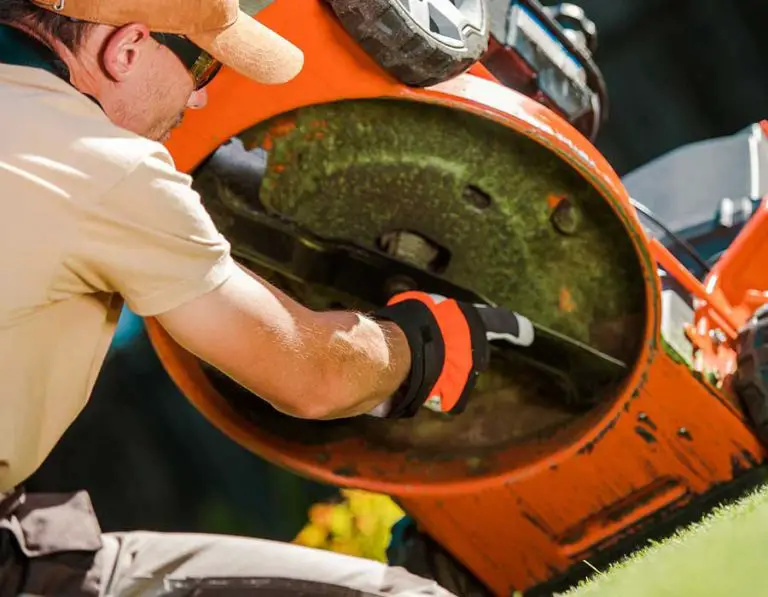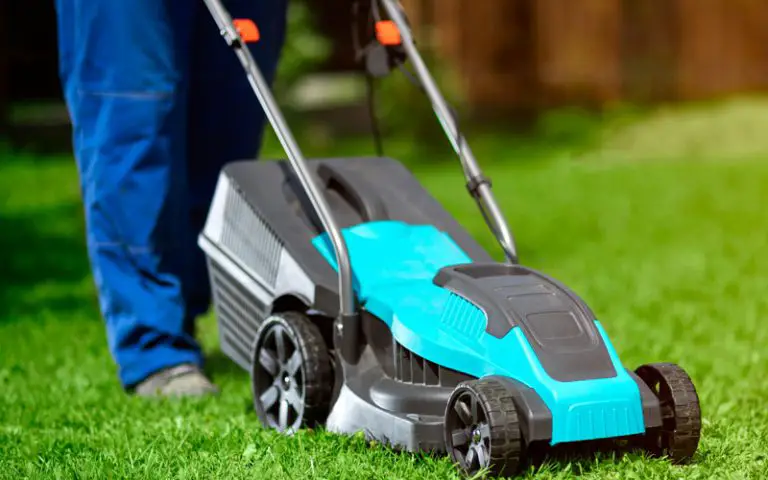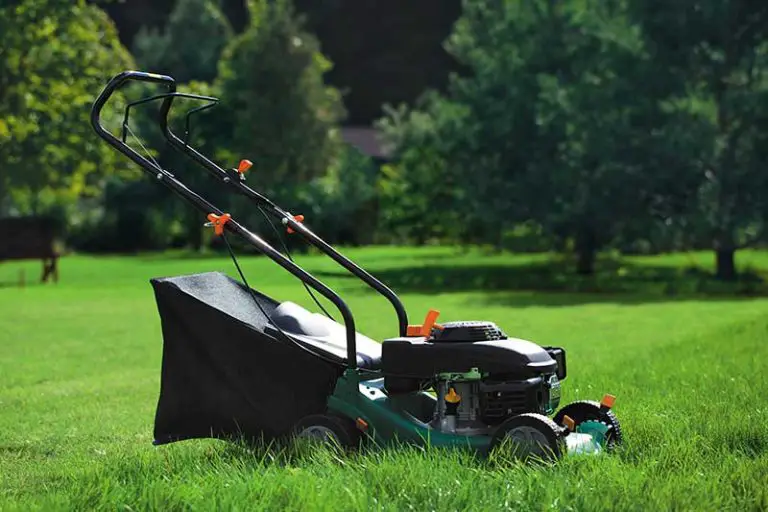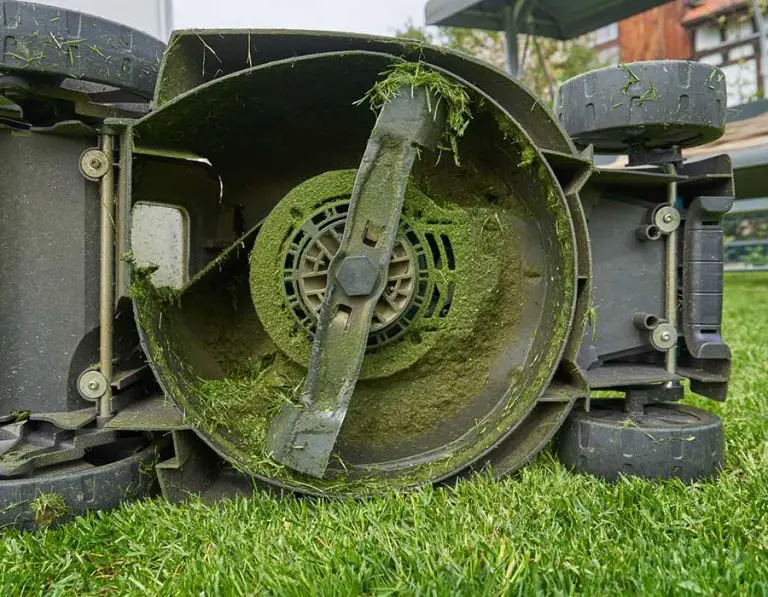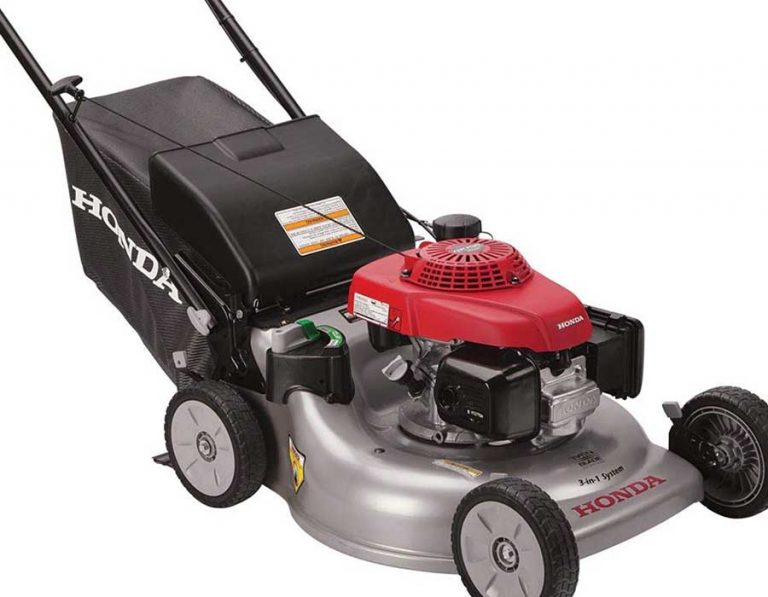How to Change a Lawn Mower Spark Plug
Lawn mowers usually require a level of maintenance each year. This is due to the lack of use they receive in winter time, which can lead to damages and issues preventing them from working correctly. One of these maintenance tasks usually involves changing the lawn mower’s spark plug, as it is one component of the lawn mower which is likely to be damaged during prolonged downtime.
Changing a lawn mower spark plug is an easy process that only requires a few household tools and a replacement spark plug. The process is quick, easy, and frequent replacements will keep your lawn mower running safely and adequately for years to come.
What is a Spark Plug?
Spark plugs are used as a means to ignite the engine of a machine. Used in vehicles along with lawn mowers, these small but powerful tools are essential for start-up and help get the engine running. They work alongside the engine, using the power supplied to put the pistons in motion, allowing the engine to run.
Spark plugs are fairly sturdy, but are often best replaced each time your lawn mower undergoes maintenance. This, of course, depends on how often your lawn mower undergoes maintenance and the conditions in which the lawn mower is left in. You might find yourself needing to replace your spark plug more frequently if your lawn mower is not stored in a shed and is instead stored outside, whilst you might find that your mower doesn’t require a replacement spark plug if it has been stored in dry, mild conditions under a cover.
Different types of spark plugs can last different lengths. For instance, copper spark plugs are the most fragile and easily damaged, whereas more robust materials will last longer.
How to Tell if Lawn Mower Needs New Spark Plug
There aren’t always obvious signs that your lawn mower’s spark plug needs replacing. Sometimes, there are other, less obvious, hints to look out for. Knowing when to change your lawn mower’s spark plug often requires attention to the engine, as it is the engine which is affected by the spark plug.
Struggle Starting
One of the main signs that your lawn mower needs a new spark plug is struggling starting the engine. The lawn mower’s engine is invariably connected to the spark plug, so any issues regarding startup can be related to the spark plug. This often manifests itself as the lawn mower is harder to start, and takes more tries to get it working. If the issue lies with the spark plug, the engine will be running smoothly and normally once the lawn mower is switched on, but may struggle to start.
Engine Stopping
Occasionally, the spark plug may be responsible for your lawn mower’s engine to stop running after a short amount of time. This could mean immediately switching off after turning the engine on, or it could work for a short while before shutting off again. Whilst this could also be an issue with the engine itself, it’s always best to check the spark plug first as it is the cheaper and easier fix. Spark plugs can be known for causing backfiring and sputtering.
Fuel Consumption
Leaving a damaged spark plug installed on your lawn mower can even lead to costly repercussions. This can include increased fuel consumption, which will in turn lead to more fuel replacements at your expense. This could be due to the spark plug affecting the fuel consumption, as fuel may not be burned correctly and adequately. This affects the efficiency of the fuel being burned, which in turn will increase the fuel consumption of the machine.
The use of different types of fuel in your lawn mower can also affect efficiency, as each fuel type burns differently. Some lawn mowers are even able to effectively utilize car oil.
Appearance of the Spark Plug
A spark plug has the capability of looking damaged if it is damaged. There are a few ways to inspect your spark plug for damages, and a few things to keep an eye out for when doing so. In order to examine your spark plug, remove it fully first so that you can get a good look at it. One of the most common ways in which a spark plug can be damaged is evident when looking at the middle electrode. The center electrode should have a flat top, so if it is rounded or any other shape, it could be causing your lawn mower some issues. In addition to this, any damage to the spark plug’s casing such as scratches, dents or cracks may also be affecting its efficiency.
If the spark plug is physically undamaged, cleaning it gently but thoroughly with a wire brush may revive it and bring it back to its original state.
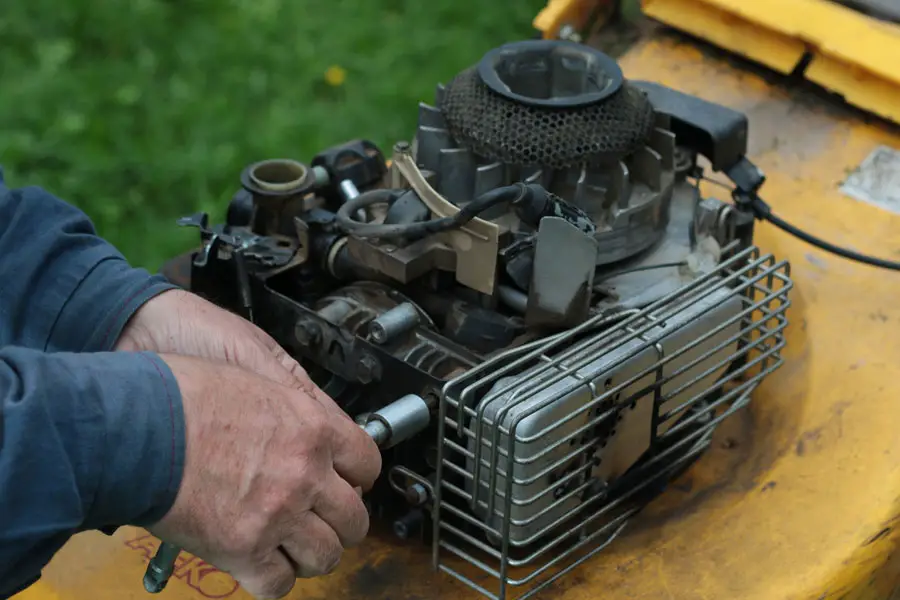
What Spark Plug to Use for a Lawn Mower?
Spark plugs come in many different sizes and models, so replacing a lawn mower one may become a case of finding one that is similar to the one already installed. Generally speaking, lawnmowers use small sized spark plugs which are often referred to as “small engine” plugs. These plugs should have a thread that is the correct size for the lawn mower, often being between 10 – 12mm and a length of 3-8”. It should also be the correct gap size, which is often outlined in the lawn mower’s manual.
Your best and safest option is to purchase a spark plug exactly the same as the one that you are replacing. This is the best way of knowing that the spark plug you are buying is the correct size and has the right thread length.
Spark Plug Components
Spark plugs have many components, which need to be considered when purchasing a new one. Each spark plug comes in different sizes, with each component having its own size and length too. Take into consideration the type of spark plug your lawn mower is already equipped with when purchasing another one.
- Metal casing
- Central or live electrode – This is connected to the ignition coil and controls output.
- Insulator – Protects the shell from the center electrode, reducing waste voltage.
- Outer or ground electrode
Changing Lawn Mower Spark Plug
Being able to change your lawn mower’s spark plug will save you time, money and energy in the long run. It will also allow you to fix spark plug issues as soon as they arise, rather than having to wait for a specialist to do it.
In order to change your lawn mower spark plug, a few pieces of equipment are needed:
- Screwdriver
- Spark plug socket
- Drive socket wrench that is the correct size for your lawn mower
- New spark plug
- Feeler gauge
- Wire brush
- Sturdy knife
- Spray-on cleaner (optional)
Prepare the Lawn Mower
Before beginning work on your lawn mower, make sure it is in a safe position and the engine is completely shut off. Also ensure that it is cool enough to work on, and there is no chance of the lawn mower turning on in the process of changing the spark plug. It’s recommended to remove the lawn mower’s blades during this procedure, as you can also sharpen them as part of the maintenance routine. If not, ensure that safety catches are deployed and that there is no way of accidentally switching the mower on. Make sure everything is disconnected and there is no risk of injury.
Disconnect Spark Plug Lead
The spark plug lead may be hiding behind the engine cover. In such a case, remove the engine cover with the screwdriver. Once the spark plug lead is visible, remove it fully. This lead is a wire which connects the plug to the Lawn Mower’s voltage supply. Ensure that the connection is fully broken for both your own safety and the lawn mower’s.
Remove Spark Plug
Put the spark plug cover over the spark plug and rotate it counterclockwise in order to loosen it. Make sure to only remove the spark plug using a spark plug cover, as any other means of removal can result in additional damage to either the spark plug or lawn mower. If the spark plug cover isn’t helping budge the spark plug, apply lubricant and continue.
Inspect Spark Plug
Sometimes, a complete replacement isn’t necessary, and a spark plug simply needs to be cleaned in order to return to full working condition. Take the time once it’s removed to inspect it for any damage, and clean it if necessary. To clean the plug, use your wire brush and spray-on cleaner if you have it. Make sure to be gentle enough to only remove dirt buildup, as being rough can potentially damage the spark plug. Stubborn or hard to remove buildup can also be gently chipped away with the sturdy knife.
Once clean, inspect the spark plug. Pay close attention to any cracks in the casing, burned electrodes, or if the center electrode is misshapen. If you spot any physical damage to the spark plug, it should be assumed to be the issue and replaced.
Adjust the Gap
When installing a spark plug, extra care needs to be taken to ensure that the gap is the right size. One way to do this is to measure the gap between the curved and straight electrodes using the spark plug gauge. If your spark plug is the correct size, it should only take some minor adjustments to be installed in your lawn mower. To make this adjustment, simply bend the curved electrode using the gauge. Make sure to do this gently, to reduce the risk of breaking the spark plug.
Installing the Plug
Install the new or newly cleaned spark plug by putting it in place and rotating it clockwise until the threads catch. Once the threads catch, use the socket to tighten further. Do this to a considerable amount, but not too hard as it can potentially break the spark plug. Turn it until it stops going down, and then give it one last quarter turn to secure it in place.
Reconnect the Lead
Once the new spark plug is securely back in place, the lead can be reconnected. This is a fairly simple process. It may require unscrewing the hood of the lawn mower and retightening the screws once the lead has been reconnected. If you are replacing the lead with a new one, now is the best time to do it.
Once the spark plug has been replaced, any old parts can be disposed of. They can usually be thrown straight into the garbage, with no need for specialist disposal.
How Often Should I Change my Lawn Mower Spark Plug?
Your lawn mower spark plug should only be changed if there is visible damage to it, or it is affecting your lawn mower’s performance. It should, however, be checked fairly regularly in order to catch any potential problems before they fully arise and manifest.
You should check your lawn mower’s spark plug:
- Every 25 hours of use
- Once a season, often as part of a winterization process
- If your lawn mower won’t start or is running incorrectly
Wet Spark Plug in Lawn Mower
A spark plug in a lawn mower should never be wet. If you are removing your spark plug and find that it is wet, it could be a sign that something is wrong. A wet spark plug is likely to either lead to backfiring or further engine damage. This is regardless of whether the spark plug is wet due to water or gas. If it is wet due to gas, however, it could be a sign that there is a leakage in the engine or lawn mower’s casing. Dry the spark plug out by simply leaving it out to dry whilst inspecting the rest of the lawn mower for any potential leaks. If there are leaks, then the lawn mower should be sent in for repairs. If the liquid is simply a build up of condensation, consider alternative storage solutions to reduce the risk of condensation occurring.
Whilst the spark plug is removed, double and triple check for any damage as you would do if it were being replaced. Take the time to clean it, and also check for sparks by grounding the base electrode on the motor cast.
Final Thoughts
A lawn mower’s spark plug is an essential component which is used to start a lawn mower up. If it is malfunctioning, it can lead to irritating and machine-breaking issues. The best thing to do is to check your spark plug annually, when conducting any lawn mower maintenance, and replacing it when necessary. A spark plug can last a long time, and the only way to keep it in working condition is to check it regularly and clean it when necessary. Replacing a spark plug is a fairly simple process that can save both money and energy, especially when done before other issues arise.


